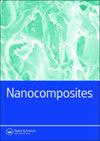Structure and properties of thermomechanically processed silk peptide and nanoclay filled chitosan
IF 3.7
3区 材料科学
Q2 MATERIALS SCIENCE, COMPOSITES
引用次数: 9
Abstract
Abstract While chitosan has great potential for biomedical and wider application due to its appealing characteristics such as biocompatibility and inherent antimicrobial activity, its properties usually need to be further tailored for specific uses. In this study, the effect of inclusion of silk peptide (SP) and nanoclays (montmorillonite, MMT and sepiolite, SPT) on the properties of thermomechanically processed chitosan were examined. Blending SP with chitosan led to a material with greater elasticity and surface wettability. For the chitosan matrix, addition of either MMT or SPT resulted in increased mechanical properties with MMT being more effective, likely due to its 2D layered structure. For the chitosan/SP matrix, while inclusion of MMT caused increased mechanical properties and thermal stability, SPT was more effective than MMT at reducing surface hydrophilicity and SPT fully counteracted the increased surface hydrophilicity caused by SP. Thus, this work shows the different effects of MMT and SPT on chitosan-based materials and provides insights into achieving balanced properties. Graphical Abstract热机械加工丝肽和纳米粘土填充壳聚糖的结构与性能
摘要壳聚糖具有良好的生物相容性和抗菌活性,在生物医学领域具有广阔的应用前景,但其性能还需进一步研究。本研究考察了丝肽(SP)和纳米粘土(蒙脱土,MMT和海泡石,SPT)包合对热机械加工壳聚糖性能的影响。SP与壳聚糖的共混使材料具有更大的弹性和表面润湿性。对于壳聚糖基质,添加MMT或SPT均可提高其力学性能,其中MMT更有效,可能是由于其二维层状结构。对于壳聚糖/SP基质,虽然MMT的加入增加了机械性能和热稳定性,但SPT比MMT更有效地降低了表面亲水性,SPT完全抵消了SP引起的表面亲水性的增加。因此,这项工作显示了MMT和SPT对壳聚糖基材料的不同影响,并为实现平衡性能提供了见解。图形抽象
本文章由计算机程序翻译,如有差异,请以英文原文为准。
求助全文
约1分钟内获得全文
求助全文

 求助内容:
求助内容: 应助结果提醒方式:
应助结果提醒方式:


